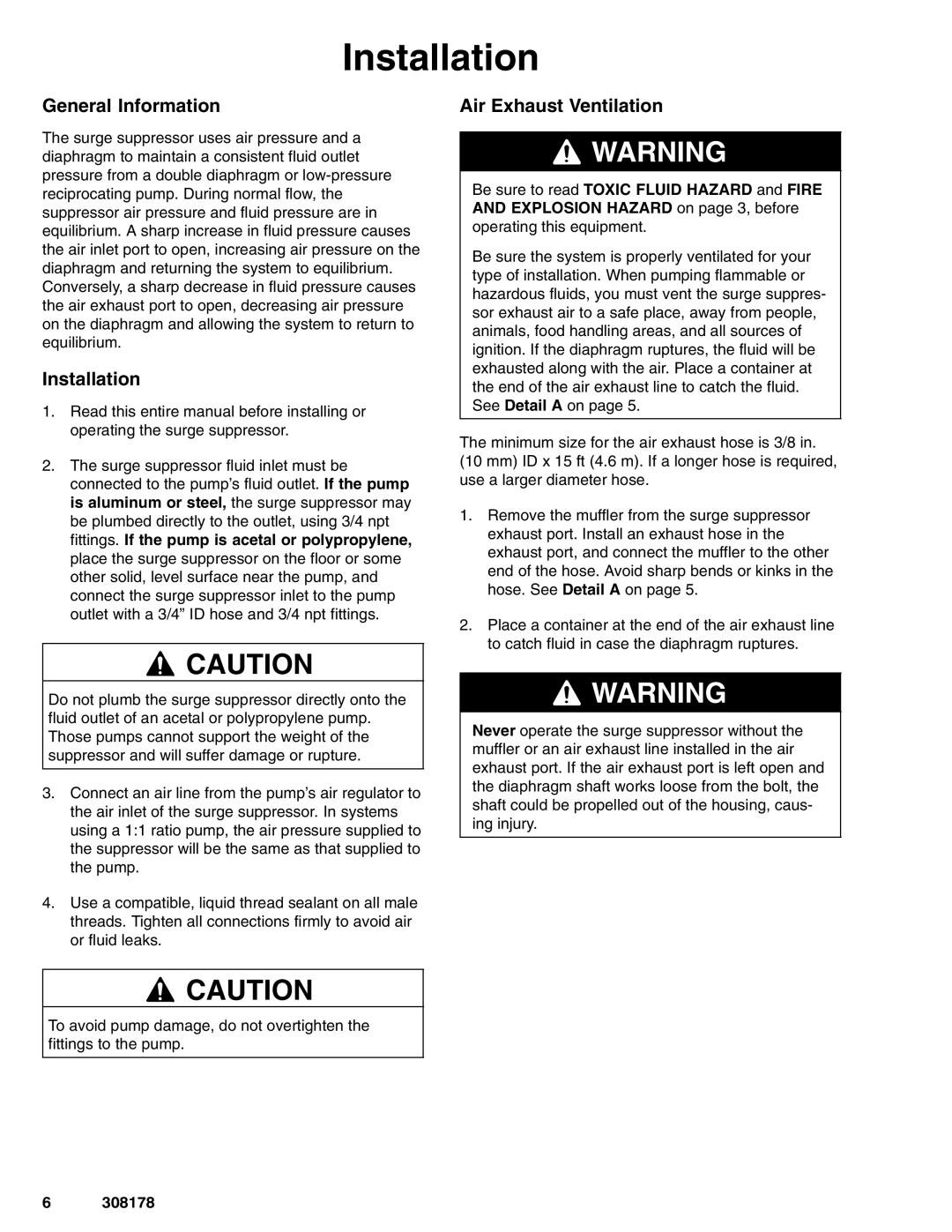
Installation
General Information
The surge suppressor uses air pressure and a diaphragm to maintain a consistent fluid outlet pressure from a double diaphragm or
Installation
1.Read this entire manual before installing or operating the surge suppressor.
2.The surge suppressor fluid inlet must be connected to the pump’s fluid outlet. If the pump is aluminum or steel, the surge suppressor may be plumbed directly to the outlet, using 3/4 npt fittings. If the pump is acetal or polypropylene, place the surge suppressor on the floor or some other solid, level surface near the pump, and connect the surge suppressor inlet to the pump outlet with a 3/4” ID hose and 3/4 npt fittings.
![]() CAUTION
CAUTION
Do not plumb the surge suppressor directly onto the fluid outlet of an acetal or polypropylene pump. Those pumps cannot support the weight of the suppressor and will suffer damage or rupture.
3.Connect an air line from the pump’s air regulator to the air inlet of the surge suppressor. In systems using a 1:1 ratio pump, the air pressure supplied to the suppressor will be the same as that supplied to the pump.
4.Use a compatible, liquid thread sealant on all male threads. Tighten all connections firmly to avoid air or fluid leaks.
![]() CAUTION
CAUTION
To avoid pump damage, do not overtighten the fittings to the pump.
Air Exhaust Ventilation
![]() WARNING
WARNING
Be sure to read TOXIC FLUID HAZARD and FIRE AND EXPLOSION HAZARD on page 3, before operating this equipment.
Be sure the system is properly ventilated for your type of installation. When pumping flammable or hazardous fluids, you must vent the surge suppres- sor exhaust air to a safe place, away from people, animals, food handling areas, and all sources of ignition. If the diaphragm ruptures, the fluid will be exhausted along with the air. Place a container at the end of the air exhaust line to catch the fluid. See Detail A on page 5.
The minimum size for the air exhaust hose is 3/8 in. (10 mm) ID x 15 ft (4.6 m). If a longer hose is required, use a larger diameter hose.
1.Remove the muffler from the surge suppressor exhaust port. Install an exhaust hose in the exhaust port, and connect the muffler to the other end of the hose. Avoid sharp bends or kinks in the hose. See Detail A on page 5.
2.Place a container at the end of the air exhaust line to catch fluid in case the diaphragm ruptures.
![]() WARNING
WARNING
Never operate the surge suppressor without the muffler or an air exhaust line installed in the air exhaust port. If the air exhaust port is left open and the diaphragm shaft works loose from the bolt, the shaft could be propelled out of the housing, caus- ing injury.
6308178
